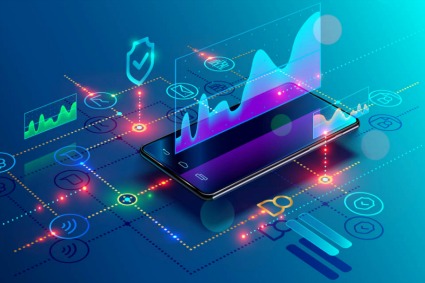
Four IT Business Trends to Watch in 2020
In order to remain competitive, it is crucial to keep up to date with the latest technologies and innovations. Competition for customers is brutal so being able to adapt to their expectations and understanding their purchasing habits is key to business success. Here are four trends that are expected to influence business this year.
1. 5G is Coming
5G is the fifth-generation wireless network that has been almost a decade in development. It is expected to launch across the world in 2020 and will offer average download speeds of about 1 gigabyte per second. Forty-five wireless operators around the world have deployed 5G. It is predicted that 200 million 5G smartphones will be sold in 2020 making 5G the foundational piece of everything for the next decade.
5G will significantly change the way users interact on the internet. It will be a game changer when it comes to streaming media, virtual reality and gaming. With such high download speeds, it will profoundly change the way we interact on the internet. Interactions will be more instantaneous than ever allowing businesses to communicate and get things done quicker.
2. Personalized Customer Service
Personalization engines analyze customer data collected from outside software or from customer behavior to curate and tailor customer experiences including automated marketing efforts, websites, and product recommendations. For example, when you visit your homepage on Amazon, you see product suggestions based on what you previously purchased and not something irrelevant. If you bought kitchenware earlier, you see more kitchenware, books and food. Your homepage is customized and tuned specifically to your needs.
Personalization software is a platform from which your business can customize the entire shopping experience from the landing page, purchasing and return visits making it a personal experience. Personalization engines are often built into or integrate with:
- Customer Data Platforms (CDP)
- Digital Experience Platforms (DEP)
- Content Experience Software
- A/B Testing Software
Gartner estimates only 40% of marketers report that they have a clear personalization strategy and roadmap. It’s important to take a step back and develop a strategy and identify high-potential use cases. The next step is to test tailored recommendations to identify high-value moments where a more personalized experience could deliver value. Gartner predicts by 2020, smart personalization engines will enable digital businesses to increase their profits by up to 15%.
3. Gig Economy Workers
The gig economy definition represents the total of flexible, consulting or freelance, temporary or full-time jobs, intermediated through an online platform that’s interconnecting people and businesses. This benefits workers, businesses, and consumers by making work more adaptable to the needs of the moment and demand. It is estimated that more than 50 million Americans were part of the gig economy in 2019, a number that will continue to grow in 2020.
California’s new law AB 5 could define the future of gig work. Under the law’s definition, a large portion of California gig workers are expected to become employees, meaning employers will soon have to pay Social Security taxes and provide workers comp and other basic workplace protections. The law puts tough restrictions on who can be independent contractors or freelancers rather than employees.
Supporters say it addresses inequities created by the growth of the gig economy, including the employment practices of ride-sharing companies like Uber and Lyft that use contractors. Company owners with independent contractors must now decide whether to hire them as employees or look for help in other states. Another alternative is asking these workers to start their own businesses, a setup the law allows.
Opponents of the law believe it will be disastrous for their businesses. The law is being challenged in state courts, and companies including Uber and Lyft are spending millions of dollars in advertising to oppose the bill and campaigning for a referendum on the 2020 election ballot on whether they should be exempt from the law. Depending on how the law rolls out in 2020, other states could use AB 5 as a roadmap for similar regulations on gig work.
As the gig economy continues to expand, the need to compete will clash with current employment laws. The IRS regulations regarding whether jobs require an exempt employee, non-exempt employee or contractor are decades old. Businesses will need to lobby the government to update regulations.
4. Voice Technology
Voice technology today is where mobile technology was 10 years ago. In 2020, voice will expand to multiple industries and searches will become more accurate and streamlined than text searches. Smart speakers such as Alexa and Google Home have already become very popular. Voice searches are easier to perform, especially when on the go like in a car or while walking. According to Gartner, nearly a third of web browsing will be voice-activated by 2020.
Voice offers those with accessibility issues an opportunity to more easily interact and make purchases. For many businesses, this may be an untapped market. When done properly, voice can create a clear path between a customer and a product, opening more opportunities for sales and cart conversions. Positive voice interactions build trust and loyalty with the brand. Companies are starting to understand how to integrate voice into their efforts in order to make more money and satisfy users expectations.
Technology continues to drive the direction in which companies do business and interact with customers. Which of these technology trends do you think will have the biggest impact in 2020?
Contributed by: Amy Noel

